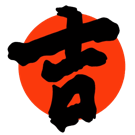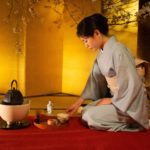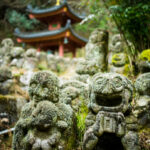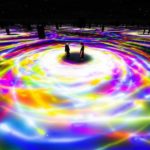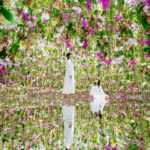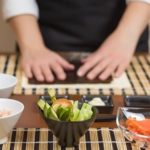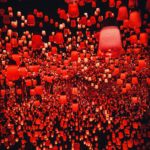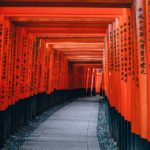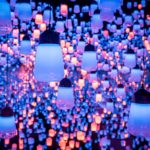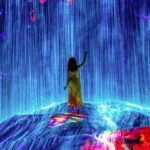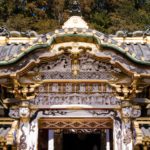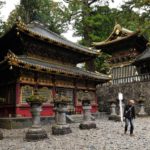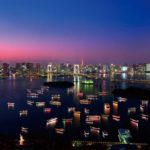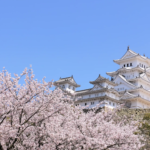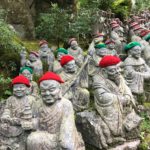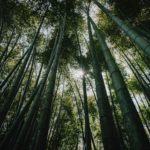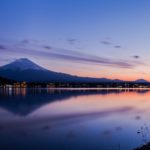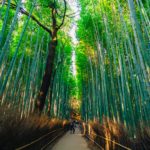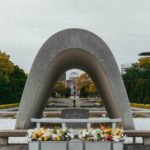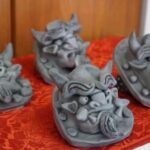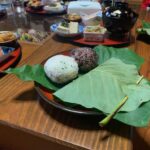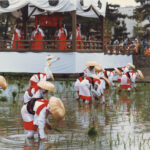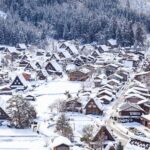Day 1 (2/20): Tokyo
Flight arriving in Japan on this day (flight arrives at 10:30AM). I'd like to use this day as an "orientation" of sorts. Thus the activities will be relatively "short". This will give the guide time to explain "small" things like how to use IC cards for trains, the difference between those and JR Passes, and any other logistic/basic questions that they may have. It will also give the guide time to go over the entirety of the itinerary and address any questions about it.
Tokyo Sky Tree is the absolute best way to get an idea of how massive Tokyo is. The view from the top of the tower is endless metropolis, and on a clear day you can see Mt. Fuji. The activities for this day area all centered around the eastern side of Tokyo, which is the more "traditional" side of the city. Thus, you will have the chance to see areas that are known for their 'Showa-era' flavor. This will start with one of the iconic places to visit, Sensouji. Here, going along with the theme of orientation, I would like for the guide to make time to describe the differences between Buddhist temples, and Shinto shrines, both architecturally and spiritually-speaking. The day can end with a traditional dinner on a yakatabune which is kind of like a Japanese house on the water. The meal would include many staples in Japanese cuisine, like tempura, sushi, chawanmushi, etc.
Activities:
- Sensouji Temple
- Asakusa "showa-era" town lunch food tour
- Tokyo Sky Tree visit
- Yakatabune dinner along Tokyo Bay or Ueno izakaya food tour
Planner's Notes: Airport pickup will be arranged. To avoid doing too much on the day you arrive, I've elected to keep all of these activities to the same area.
Day 2 (2/21): Tokyo
Today will be the first plum blossom experience. Bunkyo's Ume Matsuri is held at Yushima Tenmangu Shrine and is one of Japan's historic plum blossom sites with hundreds of years of history and also hundreds of beautiful plum trees.
I'd also like to arrange a sumo stable visit on this day. The Sumo Grand Tournament will be taking place during your visit, but in Osaka. The tournament is nice, but in all honesty visiting a sumo stable is a much better experience in my opinion. It does require waking up early, but when visiting a stable you can still witness rikishi morning keiko training fights, and also see how they train, up close. It's a much more intimate experience and it also gives you the opportunity to have questions answered about their lifestyle. Once when I visited, I saw a sumo wrestler doing squats with another sumo wrestler on his back. It gives you a much better idea of how strong they are. I highly recommend watching a show called Sanctuary before visiting (it's on Netflix).
TeamLab Borderless needs no introduction. It is probably the most famous and successful digital art "museum"... ever. I have included several pictures of what it looks like in the photo gallery below. This particular location just opened up this year in February, so it is a new and updated version of the previous art exhibit that went by the same name.
Activities:
- Sumo stable visit
- Bunkyo Ume Matsuri or Setagaya Ume Matsuri
- TeamLab Borderless
- Dinner suggestion: TBD
Planner's Notes: Currently I have not arranged for Sumo Grand Tournament tickets, but I can arrange those if you wish to visit the tournament while you are here in Japan.
Day 3 (2/22): Tokyo
I have included a few different culinary experiences in this itinerary, and so I thought that it may be a good thing to have an experience at the beginning of this trip that teaches about the three main ingredients that make up the foundation of Japanese cuisine. Miso, koji, and rice. I would like to organize a private lesson from a chef to go over these (while tasting and eating, of course), and also to go over some of the basics of Japanese etiquette as well. Some of the do's and don'ts of tableware usage (for instance not 'stabbing' your rice with chopsticks), and other things that would come off as odd while eating at fine restaurants.
While learning about Japan's rich culinary history, I thought that it would be best to use this day to also learn about its rich history in spirits as well. On this day, I'd like to organize a visit to a sake learning center that houses hundreds of different types of sake from all over the country. When most people hear the word 'sake' they typically think of nihonshu which is the nation's most popular exported spirit. However, there are so many different types of nihonshu, and a wide variety of many other spirits that are regionally popular as well. This visit will let you try spirits from all over the country while also learning about the process involved in making them.
The Samurai Fes will take place in one of Tokyo's biggest parks. It is something that kind of embodies the 'camp' side of Japan's culture, which I personally absolutely love. That over-the-top and humorous side. The festival will have food and drinks, and also sword demonstrations, and many people dressed up in full armor. It is the closest thing to a summer matsuri that I could find for the dates that you guys will be here in Japan. This will be a good chance to try out some of Japan's famous 'street foods' (takoyaki, yakiniku, etc.) and there will be both musical performances, and actors performing historical battles during the festival.
Activities:
Japanese culinary foundations + etiquette- Sushi workshop
- Sake taste testing lesson
- Samurai Fes
Planner's Notes: I think that this "food" experience is really excellent, however I can switch this out for one that is more hands-on if you'd prefer. For instance, there is another experience where we can pair you all with a sushi chef who will take you to Japan's largest fish market, pick out fresh fish, and then take you back to his kitchen where he will teach you how to prepare sushi, and also which fish pairs best with which type of sake. I've intentionally left one of the days in Tokyo as partially planned, just in case you wish to do them both. Also, this is completely a personal note, but there is a type of drink that is quite rare in Japan that this learning center has. It was once solely reserved for the Imperial family. It is a sake that is made from sake (instead of water). It is my personal favorite, and I would request that the instructor on this day serves you some.
Also, it is still too early to know the exact start date of Samurai Fes, so we may switch this day with Day 4 if needed.
Day 4 (2/23): Tokyo
Today is a very rare treat. It is one of the only days in the entire year where it is possible to visit the Emperor's Palace. Thus today's main activity will be visiting not only the palace, but also the surrounding grounds, and the remains of Edo Castle.
Activities:
- Visit to the Imperial Palace for the Emperor's Birthday
- Day left partially planned for visiting Ferdinand's school and flat
- Dinner suggestion: I think that this day would also be a good day to visit the restaurant of Ferdinand's choosing
Planner's Notes: This day has been left partially unplanned, outside of the Imperial Palace visit, pending feedback. Additional activities/experiences will be added after the first round of feedback has been received.
*Free time to visit and explore Ferdinand's campus added on this day after feedback.
Day 5 (2/24): Nikko
This day, will be the first outside of Tokyo. Nikko is not only one of Japan's best onsen towns, it is a very historical place and it serves as the final resting place for the shogun that unified the entire nation. Toshogu is the shrine that is dedicated to him. In my over a decade in a half in Japan, if I had to show people only one shrine during trip to Japan, it would be this one. It is extremely ornate, and its setting amongst the massive cedar trees is majestic. I've included a few pictures of the shrine in the photo gallery below.
After visiting Toshogu, I wanted to arrange for something a little more light-hearted on this day. There is a place in Nikko called Edo Wonderland. It is difficult to describe, but it falls somewhere between an open-air museum, and a theme park. It has places that are dedicated to learning traditional Japanese crafts, as well as spots where you can learn how to throw a ninja star. It is a visit that is interesting for people of all ages.
After the day's activities are complete, soaking in an onsen is the next stop. The hotel that I currently have selected for this itinerary includes a private onsen on the premises, however visiting a public one is also possible. In fact the area has many of them to choose from, each with slightly different mineral compositions, so visiting multiple onsen is totally possible.
Activities:
- Toshogu Shrine
- Edo Wonderland
- Onsen visit
Planner's Notes: The area is one of the most famous in Japan for its natural onsen locations, thus the accommodation that I've chosen for this leg of the trip takes advantage of that. Logistically, today is a relatively long travel day to get to this area (roughly around 2.5 hours of travel time). It is absolutely necessary to have a car here in Nikko. Thus the 2nd 'guide' will serve as a driver on this day and a car will be rented after arriving by train in this area (all of course pre-arranged). I suggest dinner at the ryokan on this day (included in the cost). Also, please note that since you'll be staying in an onsen town, you'd be able to visit an onsen each day that for this leg of the trip (2/24 - 2/27).
Day 6 (2/25): Nikko (Yunishigawa Onsen)
Today will be dedicated to Yunishigawa Onsen's Kamakura Festival. It is a really beautiful snow festival in an onsen town in Nikko. There are thousands of snow lanterns that are lit up across the area after sundown. It is difficult to describe and so I'm including a short YouTube video of it below:
Heike no Sato is a village filled with traditional Japanese thatched-roofed houses and was relocated and reconstructed in order to preserve Heike Ochiudo culture. In this area, the “Heike mounds” where Fleeing Heike Ochiudo warriors buried their weapons and treasures can be seen. There is also a lovely garden that can be visited as well.
Lastly, my suggestion for dinner is actually a farm. It's specialty is wagyu, and the chef on this farm was trained in France, so the food is a blend between Japanese and French cuisine, but with an emphasis on simplicity. This restaurant actually doesn't have a website at all, nor any form of social media. Their "advertising" is strictly word-of-mouth. This is my suggestion for this day as it is in the area that you will all be staying in.
Activities:
- Yunishigawa Kamakura Festival
- Heike no Sato
- Dinner suggestion: Watanabe Farm Wagyu restaurant
Planner's Notes: Today and the other days in this region will definitely require the use of a private car.
Day 7 (2/26): Aizu-Wakamatsu
Aizu is a town that is steeped in rich samurai history, and so I'd like to use this day to highlight a few of them, starting with Ouchijuku, which is an ancient postal town in this region. Some of the other highlights while visiting this town will be the old samurai residences, Sazaedo, and Tsuruga Castle.
Another experience that this town is quite famous for is its drift racing circuit. Drifting is now something that I think is quite famous across the world, however it is a culture that was birthed in Japan, and is something that is particularly popular in this region of Japan, extending down to Gunma prefecture. Here is a video of what this particular circuit looks like. This was during one of their 31-hour long drifting festivals back in 2013:
Activities:
- Niida Honke sake brewery visit (tentative) or Suehiro Sake brewery
- Ebisu Drifting Circuit
- Tsuruga Castle (tentative)
- Old Samurai Manor visit
- Sazaedo (tentative - time permitting)
- Ouchijuku (tentative - time permitting)
- Lunch suggestion: Mitsuya (for dengaku), and Misawaya (for negi-soba) at Ouchijuku
Planner's Notes: For the sake breweries, my first choice would be Niida Honke, however it is located in a town called Koriyama, which is a bit far from Aizu, where the other activities will be taking place. Niida Honke is my personal favorite brewery in Japan. It has over 300 years of history, and is one of the breweries in Japan that has maintained a traditional method, and is all organic from the rice to the processing method. For the racing circuit, there are a few different levels that we could arrange this depending on your level of interest. The first is to simply be in the car with a driver as he drifts around the course, the second is to actually learn how to drift. I put this in the itinerary for Ferdinand, but I do think that it is something that you will all enjoy. In addition to this, while Tsuruga Castle is a beautiful castle, it does not compare to Himeji Castle, which is well-deserving of its UNESCO World Heritage designation. As such, I would like you to consider focusing on other places while here, like Ouchijuku, and the other activities that have been listed in the 'Activities' section if visiting two castles is too much for one visit.
Day 8 (2/27): Mt. Fuji area
Please keep in mind that some of these activities may have to be spread out between this day and Day 10. The helicopter to Mt. Fuji would be the best way to reach this area, and would also be a nice experience for viewing Mt. Fuji. Depending on how tired you think you would be after landing, is how I would like to spread activities out between this day and the next. I've put the bulk of them on this day, but please consider it as a compilation of the activities that would take place here.
There is a Maglev train exhibition center here in this area. This is a test track for Japan's upcoming train system that will utilize magnets to 'levitate' their trains thereby increasing the highest possible speed. The highest speed that these trains can reach is around 603 km/h, and the system will be 'opened' in 2027, however you can witness their speed at this location.
Oshino Hakkai is an open-air museum with 8 small ponds that are made from pure (drinkable) water that flows from Mt. Fuji. It is kind of a preview of what you would be experiencing in Shirakawa-go as the buildings in this area are similar, architecturally-speaking. The buildings all house different experiences, however the draw is the beautiful, small thatch-roof houses with Mt. Fuji set in the background.
Activities:
- Helicopter ride from Tokyo to Mt. Fuji
- Maglev Exhibition Center
- Oshino Hakkai
- Fujiyoshida Sengen Shrine (tentative)
- Chureito Pagoda visit (tentative)
Planner's Notes: Travel time on this day by train would be extremely long and also require a very early wake up time (roughly 6 hours), which is why I currently have the chartered helicopter flight in the itinerary. Arrival would be around noon, and so some of these activities may need to be saved for Day 10. This would also be the best way to get a great view of Mt. Fuji from the air on your way to this region. So logistically-speaking, the best way to get to the Mt. Fuji area at the moment would be to take a train to Tokyo, and then a helicopter from there to Mt. Fuji.
Day 9 (2/28): Mt. Fuji area
This day will be dedicated to the Mt. Fuji golf course. There are a few different courses around Mt. Fuji, and currently we'll prioritize the following course:
https://www.fuji-gc.com/-
Activities:
- Mt. Fuji golf course
- Dinner suggestion: TBD
Planner's Notes:The primary focus for this day is the golf course, but as the previous day is slightly packed, if possible, maybe we could place one of the activities in from the previous day (like Chureito Pagoda, or the shrine visit). I think that visiting Chureito Pagoda during sunset may be a nice addition to this day if it is something that does not fit into the itinerary time-wise on Day 8.
Day 10 (3/01): Mt. Fuji area
From Autumn until early Summer, climbing Mt. Fuji is not recommended due to snow, ice, extreme winds, avalanches, and the temperature at the top of the mountain dropping well below zero. However, I did want to have a day that is dedicated to nature, and hiking, and stopping at a few teahouses along the way. Something that is safer for this time of year. There are several different hikes around the lakes that provide beautiful views of Mt. Fuji. We can cater the hike to your preferences as there are different routes in the area that range between two and seven hours, and various altitudes as well. As mentioned in the previous day's itinerary, we'd also like to make sure that there is some space for one or two activities that did not fit in that day on this day.
Activities:
- Mt. Fuji area hike
- Dinner suggestion: Hoto Fudou
Planner's Notes:
Day 11 + 12 (3/02 - 3/03): Shirakawa-go
The stay here in Shirakawa-go is mostly centered around enjoying the Japanese winter countryside scenery and relaxing. Countryside
Activities:
- Snowy mountain cooking lesson
- Lunch suggestion(s): Goro-bei + Genki na Yasai
- Dinner suggestion(s): Gassho + Hakusuien
Planner's Notes: The aim for this leg of the trip is to enjoy a peaceful stay in the Japanese countryside. The accommodation that I currently have selected is a gassho-zukkuri style home in the area along the river. This is a very traditional house, and so it will not have many of the modern amenities that you would expect from a hotel, or even a minshuku. The home will be equipped with a traditional fireplace, tatami mats and futon to sleep on. It is a very authentic home. I've included a picture of the accommodation in the photo gallery below, but unfortunately a lot of these places do not have websites, only phone numbers to make reservations.
Day 13 (3/04): Kyoto
In this iteration of the itinerary, I would like to only have a single activity for this day as you'll be traveling quite a lot to get from Shirakawa-go to Kyoto. I think that this will be a good semi "rest day" since it is also around the halfway mark for the trip, and there has been a lot of back and forth between different regions in Japan so far. It can also be used as a good way to relax, and do any shopping or independent activities that you wish to do individually.
Thus my suggestion for this night is to have dinner at a teahouse in Kyoto with a geisha. This is something that is sometimes misunderstood from people outside of the culture. Geisha/geiko/maiko are very well educated artisan entertainers, and although there are different schools all across the country, I do believe that the best is still in Kyoto, and the artisans here take their craft the most seriously out of all of their counterparts. Dinner with a geisha will typically include private music entertainment, games, and tea. It's also a really good chance to delve deeper into the lifestyle of a geiko, and what their daily life is like. Also, as this can be done in the evening, it give you all the chance to rest during the day.
Activities:
- Higashiyama Hanatoro (tentative)
- Lunch suggestion: Kisshin (tentative)
- This is a small breakfast/brunch-only establishment that focuses on hearty meals in Kyoto
- https://www.kishin.world/
- Dinner / Experience suggestion: Dinner with geiko-san
Planner's Notes: While you'll be staying in a hotel in Kyoto for this leg of the trip, the focus will definitely be on the Kansai area in general (Kyoto, Osaka, Kobe, Nara, etc.). Most of the places here are not difficult to reach from Kyoto, which is why it was chosen as the central location for your accommodation. Kisshin is a special place that only does breakfast and early lunch. It is all very natural, traditional Japanese dishes with a very, very slight modern flair to them. It's very much 'homestyle' Japanese food. I marked it as tentative because the last slot for reservations is around 12:45PM. Currently, I'm not 100% sure if you guys will make it to Kyoto in time to comfortably make it to the restaurant in time. In addition to this, you will notice that I'll be placing more suggestions for restaurants for this leg of the trip as I feel as though Kyoto and to a lesser extent Osaka, have some of the best restaurants in all of Japan. When I say that, I mean that the quality of "normal" restaurants is higher here. So, not all of the restaurants I'm suggesting here are 5-star, fancy places. Some are very simple, but very good at what they do. The focus is on very good, quality food experiences.
Day 14 (3/05): Kyoto
I'd like to use this day to organize some things that Kyoto is famous for, and also a few things that Japan in general is famous for, but are best experienced in Kyoto. For this day, I'd like to arrange a relatively early start. The reason for this is so that you can visit Japan's most famous shrine, without being crowded by other tourists. Fushimi Inari is a shrine dedicated to Inari, who is a deity that is seen as the god of rice, fertility, wealth, industry and many other aspects of life. The symbol of Inari is usually a fox, and so the 'guardians' of their shrines are typically foxes and Inari has thousands of shrines across Japan (the most of any deity in the Shinto pantheon), however Fushimi Inari Taisha is the main shrine for this deity. Many people visit early in the morning, or late at night in order to avoid the very, very large crowds that appear during the day. I've included a picture of what this shrine looks like in the photo gallery below, but it is famous for its thousands of large red torii gates that work their way up the mountain that the shrine stands on.
After this I wanted to arrange a proper tea ceremony. There are several different tea masters in Kyoto, and each of them has their own signature style. Some tea masters are very traditional and will conduct the tea ceremony at a temple. Others have created a somewhat modern version of the tea ceremony that the hold at art galleries where you can discuss the artwork while enjoying the ceremony in a more modern setting. Before making a final call on what type of ceremony would be most appropriate, I would very much like to discuss which "style" you would most enjoy.
Lastly, on this day I would like to organize a kendo martial arts lesson for you and your family. I sometimes find it difficult to explain just how incredibly important an experience like this is. I think that on the surface from someone on the outside looking in, it appears to just be a lesson on how to fight with sticks. However, dojo culture and discipline is really 'baked' into Japanese culture in general, and it's a side of the culture that many don't see when visiting because they don't get the chance to visit a dojo. The teacher we use is a descendant of the samurai class, and so it is a family tradition for him. We use this person not only because he is able to perfectly describe the importance of every aspect of this side of Japanese culture in English, but also because he prioritizes the cultural aspects of the lesson just as much as the actual martial arts side of it. It is something very much worth experiencing.
Activities:
- Fushimi Inari Taisha visit
- Sanjusangendo Temple visit (tentative)
- Tea ceremony
- Kendo workshop
- Dinner suggestion: Gohan-ya Isshin Kyoto
Planner's Notes: I'd very much like to use a private car on this day to best utilize time, and avoid having to rely on public transportation. The drivers that we use are all very knowledgeable about Kyoto as well, and so they tend to add value to the itinerary as they may have unplanned restaurant and activity suggestions based on your personal needs and wishes. It is also just a more relaxing way to get around the city when the itinerary itself is a little more 'condensed'.
In addition to this, for your trip here I've tried to include only a few temple/shrine visits, and only the ones that are 'exceptional'. From my many years of guiding group tours for other companies (using their itineraries), I've come to realize that people can easily get 'temple'd' out after the 4th or 5th temple visit that has been crammed into a 3-day itinerary. I'm trying to avoid this by only placing in visits to places that are must-visit, based on the history, design, or the experience that you get at that particular location. If you would like to include more stops though, please let me know.
Day 15 (3/06): Nara
While traveling throughout Japan, you will have no doubt noticed some of the sometimes ornate roof tiles that line the houses here. A lot of these tiles are fixed with patterns or symbols that represent different families in Japan. As this is a family trip, I thought that it might be nice to delve into this a little, while creating your own family tiles. I've included a picture of what they look like in the photo gallery below so that you have an idea of how substantial they are. They also make a great memento of your trip.
This next suggestion is a bit obscure, but it is a process that I find absolutely fascinating, and also the workshop itself is an oddly beautiful space. It's a small boutique ink maker's workshop. The visit to here wouldn't be long, but in planning this itinerary, I wanted to make sure that I included at least one visit to a Japanese craftsman's workshop or home. I chose this one, because of its beauty, and also its intense processing. I'm going to include a small video of this particular workshop to give you a better idea, but if you think that this is something that wouldn't interest you, please say so.
Nara itself is famous for the deer that roam freely around the temple grounds of Todaiji. Todaiji itself is an important cultural and spiritual asset as it is the place that houses one of the nation's largest seated daibutsu statues. The statue itself is one of Japan's National Treasures and it is also a UNESCO World Heritage Site. The visit here is not just for the statue though, it is also for the Omizutori ceremony that will be taking place at this time. Omizutori, or the annual, sacred water-drawing festival, is a Japanese Buddhist festival that takes place in the Nigatsu-dō of Tōdaiji. The festival is the final rite in observance of the two week-long Shuni-e ceremony. This ceremony is to cleanse the people of their sins as well as to usher in the spring of the New Year. Once the Omizutori is completed, the cherry blossoms usually start blooming and it is a sign that Spring has arrived. This is a tradition that has continued for over 1,200 years. Here is a video to give you a visual of what it looks like:
Activities:
- Onigawara crafting
- Nara Ink-makers
- Todaiji Temple visit
- Nara Park
- Shunie / Omizutori Matsuri
Planner's Notes: Today is really all about Nara, and the timing is quite auspicious as the Omizutori matsuri event is one of the more sacred annual events that take place here.
Day 16 (3/07): Kyoto
Today's first experience is a kogatana crafting lesson with a Japanese swordsmith. The guy that operates the workshop that I have in mind still uses all-traditional methods, nothing modern whatsoever. He gives you different options for materials that you want to use, and Japanese steel is one of them. A kogatana is a miniature version of a katana. The characters for the word are literally just "small" and "katana" put together. Today will require a translator as the swordsmith does not speak English at all, and it would be a relatively long experience (roughly 4 hours), so I would like for you to consider this as the 'main' activity for the day.
Outside of that activity, this day is mostly about exploring the Arashiyama district. After the kogatana workshop I'd like to arrange a boat ride down the Hozugawa river. This ride however is a traditional 3-manned wooden boat, and is a portion of the route that was used in the past to transport cargo between Osaka and Kyoto. The ride is beautiful, and a lovely way to take in the natural surroundings of Kyoto and the beautiful cherry blossom trees that line the river. It ends in the Arashiyama district, where you will have the chance to visit one of Japan's most beautiful zen gardens (a UNESCO World Heritage Site). The garden is somehow beautiful and different in every season. It was masterfully designed. There is a path behind Tenryuji that is famous for being lined with extremely tall bamboo. I'm going to include a picture of it in the small gallery below. There is an open air steam-engine train that is an excellent way to get to the meeting spot for taking the boat down the river. It is a beautiful way to get to the boat, however it will add a small amount of time to your overall journey. I do believe that it is worth it, however the route of the train is almost exactly the same valley that you'll be traveling through on the boat. If I had to choose one of them, it would definitely be the boat.
The Arashiyama area also has a small mountain called Iwata that also serves as a sanctuary for monkeys. It is a really nice hike (albeit, very short), and the top of the mountain gives you a view of the entire city of Kyoto. I really enjoy giving my guests a high up view of each location that they visit while traveling, so I've put this in tentatively, but it isn't a necessary visit, especially since there are a lot of places that you'd be visiting on this day, and if you want a more relaxed pace, then this is the activity that I would omit.
Otagi-nenbutsuji is a really unique temple in Arashiyama that is rarely visited. It has hundreds of statues, and each of them was made by a completely different person. One of the former head monks decided that he would teach sculpting to anyone that visited the temple and wanted to learn (this was in the 80's, I believe). All of the statues are spread around the temple grounds, and because he gave his students carte blanche with their designs, you'll see some of the ojizou statues wearing headphones, and holding a walkman or other contemporary paraphernalia. It is a site that is unlike thing else in Japan, and it goes along with my theme of only taking you guys to temples and shrines that are unique, and enjoyable to avoid being "temple'd out", especially during this leg of your trip.
Activities:
- Kogatana sword making lesson
- Arashiyama Torokko steam-engine train (tentative addition)
- Hozugawa Kudari traditonal boat ride to Arashiyama
- Iwatayama monkey park (tentative)
- Tenryuji Temple
- Otagi-Nenbutsuji Temple
- Dinner suggestion: TBD
Planner's Notes: n/a.
Day 17 (3/08): Himeji + Osaka
Himeji Castle is the best example of what a grand castle used to look like in Japan. The castle grounds are relatively well maintained, and the castle itself is completely accessible, and unlike many of the other castles in Japan that have been reconstructed based on their original design, Himeji Castle has not been turned into a museum. Meaning the floor plan is in its original state. Meaning it gives you a better sense of what a castle was actually like during that time.
I'd like to follow this up with somewhat of a strange activity. I would like to plan a visit to the Cup Ramen Museum in Osaka. I know this sounds strange, but when thinking of the major places that most people visit when they come to Osaka, most are not as uniquely Japanese as this museum is. Also, it isn't really a museum in the sense that there are a lot of interactive experiences that you can partake in. You can design and create your very own flavor of cup noodles, and they'll even seal it for you there. They also have a cooking studio for chicken ramen, and a kitchen where you can try instant noodles from all over the world. It is a strange place, since all of this is dedicated to instant noodles, but I think that 'strangeness' is one of the things that makes Japan unique.
For this day, I really wanted to focus more on personal activities that I think you guys may enjoy as a family, together. I feel like Osaka is one of the rare places in Japan that actually comes alive at night. After the Cup Ramen Museum, I thought that a cruise of the Dotonbori canals as it is starting to light up would be a good way to see Osaka. Dotonbori is by far my personal favorite area in Osaka. Specifically the area near Shochikuza Theater. The ridiculousness of the storefront ornaments, the plethora of restaurants and the loudness of the people roaming the streets are all part of the boisterousness that is Osaka and its people. A food tour of this area is the best way to have dinner.
This next part is kind of a question rather than a suggestion, because it will really depend on the personality of you and your family. Would you guys be down to do karaoke? Maybe by yourselves, or even with the guide that you have? May be a cool way to hear some Japanese music if you do it with your guide as there are a few places in Osaka that are more like karaoke bars with strangers rather than private booths. There are so many excellent places to go to in this area for that, and most of those places have other activities as well, so that you guys could enjoy multiple activities together.
Activities:
- Himeji Castle visit
- Kokoen Garden
- Miho Museum
- Dotonbori Canal Cruise
- Street Food tour
- Karaoke Booth rental
Planner's Notes: Please let me know what you think about the Cup Ramen Museum, and the karaoke booth. Again, with how close Osaka is to Kyoto, I don't foresee the need to switch hotels as Osaka is about 30 minutes away from Kyoto, and the subway lines for both cities connect. Also, while I do think Himeji Castle is by far the best castle visit in Japan, if you did want to save time, we could replace it with Osaka Castle which is also great, however it has been converted to a museum.
Day 18 (3/09): Kyoto
Something that I would like for you all to consider for this leg of the trip is a homestay with a Japanese family. This would give you an insight into the average day, and life of Japanese people as well as what the average Japanese home looks like. For instance, I tell my family about how pretty much everyone in Japan has a butsudan altar at their family homes. It's an interesting side of Japanese spiritual life to witness. Also, of course, there is the chance to try authentic home cooking.
As the previous day could possible extend into the night, I wanted this day to be a little lighter on experiences and activities. In the morning, I wanted to arrange a Buddhist meditation lesson at a temple. Specifically zazen-style meditation. After that, I'd like to arrange a sweets-making lesson as Kyoto is famous for its Japanese sweets, and there are many places where you can craft these traditional wagashi sweets.
Activities:
- Homestay w/Japanese family
- Zazen meditation lesson
- Wagashi sweets-making lesson
- Dinner suggestion:
Planner's Notes: It should be possible to arrange a homestay and also do these activities. One option would be placing these activities on a different day, and the other option would be to do them together with the host family. The latter option would probably be more difficult as I'm sure the host family would have activities that they would want to do with you themselves.
Day 19 (3/10): Hiroshima
Hiroshima is not that far from Kyoto (by bullet train), but it is a nice place to visit for the museum, and also get a better understanding of what happened there. As quiet as it's kept, Hiroshima is also a great place for food and so there will also be many options here for dinner as well. This day will focus on the two main highlights of Hiroshima, the Peace Memorial Park and Miyajima Island. I'm sure you've all seen pictures of the giant red torii gate that is "floating" on top of the sea. That is Miyajima. The right guide will make all the difference today. When you visit Miyajima, knowing the history of it, it is really special. The island itself was/is seen as a god in the Shinto belief system. It was illegal to give birth on the island, and also illegal to... die on the island. There is a temple here with a fire pit that has been kept lit for over 1,200 years, and a short hike of Mt. Misen gives you one of the best views of the Seto Inland Sea (there's also a ropeway if you don't want to hike the mountain).
As far as food goes, for lunch I'd like to send you to an okonomiyaki restaurant. Okonomiyaki is done in a unique way in Hiroshima, so it's totally different from the way you may have it on the food tour in Osaka. There is a place that is in central Hiroshima called Okonomimura, which means village of okonomiyaki, and it is essentially a 5-story building where every single restaurant inside is a teppan-style spot that has their own take on the dish. For dinner, I would like to either arrange for something more adventurous (cow's tongue is a delicacy that can be had in this region), or a food tour of the city. Since your accommodation will be on the island of Miyajima, the food tour of the city may be better on the following day.
Activities:
- Hiroshima day trip
- Peace Memorial Park and Museum
- A-Bomb Dome
Okonomimura for lunch- Hiroshima seafood lunch (oysters are great here)
- Miyajima Island visit
- Short hike of Mt. Misen (maybe 45 minutes)
- Daishouin Temple
- Itsukushima Shrine
- Dinner suggestion: Nakashima Ryori (Michelin 3-star) or Hiroshima food tour (tentative)
Planner's Notes: Miyajima is one of those rare places that have deer roaming the streets (kind of like Nara). Deer in Shintoism are seen as messengers for the gods, so when in sacred places they are not harmed or pushed away. As mentioned, if you wish, you can take a ropeway to the top of Mt. Misen instead of hiking it. As this leg will have a lot of active experiences in it, I want to leave the last day of this leg semi-open for rest and recovery.
Day 20 (3/11): Onomichi
The Shimanami Kaido is a famous biking route in Japan. This is a biking route that has bridges that go over the sea, and takes you to different sites, restaurants and other places of interest dotted between tiny islands in the Seto Inland Sea. Onomichi in and of itself is also a nice visit, so although it complicates the itinerary a bit, I do think that staying in Onomichi may be a nice way to spend the day. I've positioned the map for this day to give you an idea of the route (it mostly follows the major roadways in yellow and orange). There are multiple options that you could plan for, depending on how intense or relaxed you wish for the journey to be. There are routes between the distances of 17km - 80km that we could arrange for. We could handle the bike rentals, and we can also secure an e-bike to assist with the inclines if you think that would be appropriate for anyone in your family.
This would be best as a guided experience so that you don't have to worry about directions, maps, getting lost, etc. Also the guide will stop at nice places along the way for food, and other points of interest that are spread throughout the islands . The longer the journey you choose, the more places you'll be able to explore. I think that the longest route on an e-bike would probably be somewhere around 6+ hours.
Activities:
- Shimanami Kaido cycling route
Planner's Notes: Staying in Onomichi area overnight is my current suggestion for this day, however it is not necessary at all, since traveling to this region will be done by a very short (roughly 40 minutes) bullet train ride + a local train. There is, however, a hotel that is biker friendly that includes bike racks in the rooms if you do want to explore staying here overnight as an option, or extending this leg of the trip.
Day 21 (3/12): Miyajima
Currently leaving this day somewhat open, as I think that you guys would be very tired after biking through the Shimanami Kaido route.
I would like to make a suggestion though for a morning activity though. Early in the morning the tide around the island is high enough for people to traverse through the giant torii gate that is sitting outside of the UNESCO World Heritage shrine, Itsukushima Shrine. In past eras, it was required of people visiting the island to pass through the gate before stepping foot on it. I wanted to arrange a kayaking tour of the the island and it surroundings to give you guys a better idea of what the island looks like, and to enjoy its beautiful natural surroundings.
Activities:
- Early morning kayaking around Miyajima Island
Planner's Notes: I could arrange a morning kayaking experience, or one that would start in the afternoon. Please note that the routes would be completely different, and the tide is only high enough in the morning for you all to actually pass through the torii gate. The afternoon route would be completely different but still worthwhile.
Day 22 (3/13): Tokyo
I don't know if anyone in your family is interested in fashion, but we could arrange for a fashion stylist to show you all some of the more fashionable districts in Tokyo where the boutique stores are. The stylist could also cater the tour to the type of clothing that you wish to see.
In addition to this, I really wanted to use this day (and the following day, depending on what time you wish to depart Japan for China) to arrange some activities and restaurant visits that weren't possible during the first leg of the trip. One of these activities is a tour of Akihabara. Akihabara is known as the 'mecca' for Japan's anime, manga, and video game culture. It is bright, and quirky. It is definitely unlike any other neighborhood in Tokyo. The streets are lined with arcades, manga shops, and a lot of electronic stores as well. In fact the world's largest electronic store is located here. The guide I usually choose for this neighborhood is an absolute expert on all things anime. He has seen pretty much every anime every made and he knows Akihabara better than anyone I know.
Activities:
- Tour of Akihabara
Tokyo Fashion Boutique tour with personal shopper/stylist (tentative)- Kintsugi ceramics lesson
- Dinner suggestion: TBD
Planner's Notes: I'd also like you guys to consider an architectural tour of Tokyo if the two options that I've mentioned don't really interest you or anyone in you family.
Day 23 (3/14): Tokyo
Departing for Shanghai on this day, and then leaving Shanghai on flight OS76 at 10:30AM on March 18th.
Activities:
- n/a
Planner's Notes: Was not sure if it was possible for us to book the international flight or if it was already booked, so we haven't planned anything for this day just yet.
